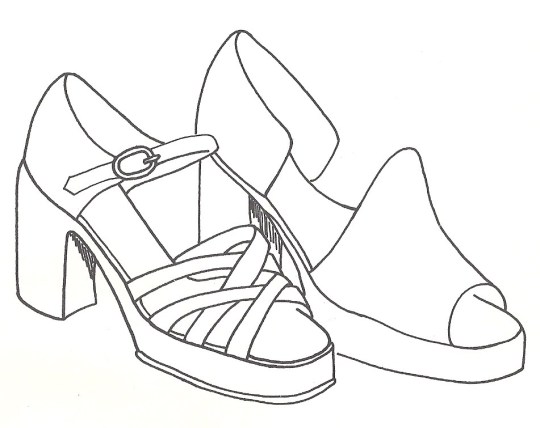Before we begin this lesson I should give the definition of a last for those who don’t know what that is. The last is a form in the approximate shape of a human foot, used in shoemaking to produce the fit of a shoe or boot.
Uppers : Vamps
Vamps often consist of a single piece of upper material although they may have two separate pieces stitched together to make a whole.
Example:
A. Toecaps and Wingcaps
A typical toecap is set squarely across the shoe. A wingcap is angled back to give a streamlined effect. This may cover the toes in an intricate flowing curve or may lie simply around the edge of the last. Either way, the wingcap and vamp extend to the lasting edge (edge of the last).
C. Tongues and Tabs
A vamp may have a separate tongue or the vamp and tongue may be cut all in one piece (there are so many variations). An apron may have a separate tab to cover the instep or the apron and the tab may all be cut in one piece.
D. Peeptoes
The toe can be left open and then the vamp would consist of only a single strap or a series of straps depending on the design. Keep in mind there are so many possible variations it would be impossible to cover all the variations of vamps.
Images and text courtesy of © c. & J. Clark Ltd. Manual of Shoemaking






Leave a comment